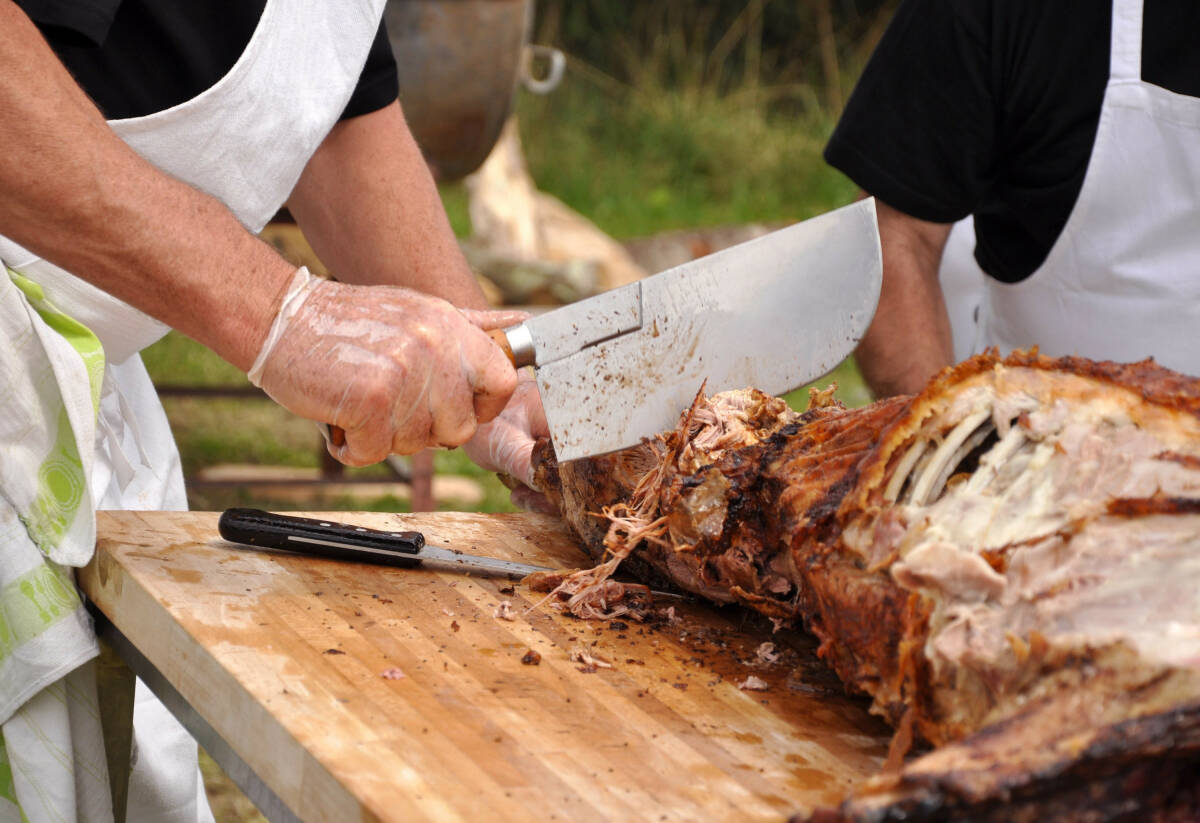How to roast on a spit in 5 easy steps
01•08•2021
When you looked at your calendar this morning, you realized that THE annual family event is almost here! It’s time for the famous spit-roast on the beach, concocted by the boyfriend, cousin and father-in-law, your infernal trio of spit turners. Yet every time, you think, “It got messed up again.” This year, before drawing SOS in the sand, take a deep breath and read our helpful tips.

Step 1: Have the right equipment
Unless you can roast on a spit in a garbage can like Bob the Chef, you will need to rent the equipment. Your two most important pieces: a good quality metal container, and a spit, or rotisserie skewer.
Step 2: The art of skewering
There’s a reason it’s a profession, it’s a hard job! Ask your butcher to help you, he or she has mastered the art. Plus if the lamb falls into the fire afterwards, it won’t be your fault. If you can’t convince your father-in-law to ask a professional, bring him some thin wire. This will help him attach the feet for roasting, and hopefully limit the damage.

Step 3: Preparing the marinade
Before you start roasting your pig, brush the inside with a dry marinade, made with salt and your favourite spices. But be careful! If you stubbornly insist on basting your meat during cooking, banish all oils and butter – this will make it burn. Pour on some beer instead, between two sips, or even a soft drink like Coca-Cola. If you’re feeling exotic, try a Dr Pepper!
Another option: Salt the meat generously and drizzle a Charmoula vinaigrette over it during cooking – this works particularly well for lamb. Mix fresh ginger, coriander, sweet paprika, powdered cumin and olive oil for best results. The #1 tip from Alexis: Make a flavoured basting brush Take a stick, ideally metal, and attach a bouquet of rosemary. This makes an instantly delicious way to baste during roasting.
Step 4: Cooking rules
Here is a simple way to get your optimal cooking temperature – take the weight of the meat, and double it. That’s how much charcoal you’ll need. Place your coals in the metal container, putting more where the meat is thickest. Logical, right? And if you’re out to impress Aunt Ginette, grab a thermometer and follow these guidelines:
Beef, veal, lamb or wild boar:
Alexis suggests cooking at 63°C for medium cooking and 55-60°C for rare cooking for striploin steak or veal. For top sirloin or shank cut, 70°C is good!
Pork: 68-70°C (pink – well cooked)
Poultry: 70-74°C
Step 5: Cooking times
Plan on 15 minutes per kilo. One kilo equals 2.2 pounds, and a calculator costs about $10. No excuses this time for getting the timing wrong! And don’t forget you need to turn the spit the whole time while roasting. If you’re more tempted by the sand castle competition than turning a roast, rent an electric spit


How many people will one lamb feed?
Everything is going perfectly – your roasted pig (or lamb) is finally ready and the smell is mouth-watering. But then Aunt Ginette slips on Leo’s Frisbee and slides straight into your delicious roast, taking it with her as they roll dangerously fast towards the lake. Before your famous family gathering has gone up in flames, it might be time to think of a caterer, and find his phone number quickly!